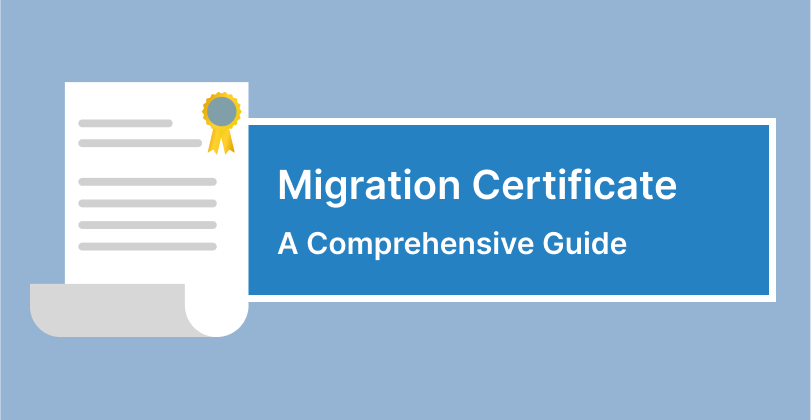The economically weaker section (EWS) certificate is a crucial document in India for those not covered by reservation groups like ST, SC, or OBC. This
Financial institutions often require specific documents to confirm an individual's or entity’s financial credibility. These documents play a crucial role in legal, administrative, or financial transactions, ensuring that all parties involved have the necessary proof of stability.
A solvency certificate is a vital document issued by financial institutions that testifies to an individual's or entity's financial stability and creditworthiness. In this guide, we will explore the meaning, format, and process of obtaining a solvency certificate, providing a thorough understanding of its significance and application.
Solvency Certificate Meaning
Solvency certificates are official documents that certify an individual's or a company's financial health and ability to meet long-term obligations. Issued by banks or financial institutions, they serve as proof of the applicant's creditworthiness and overall financial stability.
The certificate is used to demonstrate that the applicant has sufficient assets to cover their liabilities, ensuring that they can honour financial commitments without defaulting.
Uses of a Solvency Certificate
A solvency certificate is required for various purposes, including:
- Visa Applications: When applying for certain visas, especially for education or business purposes, a solvency certificate may be required to prove financial stability.
- Tender Participation: Companies often need to submit a solvency certificate when participating in government or private tenders to demonstrate their financial capacity to complete the project.
- Loan Applications: Financial institutions may require a solvency certificate to assess the creditworthiness of an individual or business before approving a loan.
- Business Transactions: It is used in significant business transactions, mergers, and acquisitions to verify the financial health of the parties involved.
- Legal Proceedings: In certain legal cases, a solvency certificate may be needed to establish financial stability and credibility.
Format of a Solvency Certificate
While the format of a solvency certificate can vary depending on the issuing bank or financial institution, it generally includes the following details:
- Bank Details: The name and address of the issuing bank.
- Date of Issue: The date on which the certificate is issued.
- Applicant Details: The name, address, and contact details of the individual or entity applying for the certificate. This may include examples such as:
- Individuals: Students, job seekers, or anyone applying for a certificate on their own behalf.
- Entities: Educational institutions, employers, or legal representatives applying on behalf of someone else.
- Financial Summary: A statement summarising the applicant's financial status, including details of assets and liabilities.
- Declaration: A declaration by the bank certifying the solvency of the applicant based on the available financial information.
- Authorised Signature: The signature of the bank official, along with their name and designation.
How to Obtain a Solvency Certificate?
Obtaining a solvency certificate involves a systematic process; here is a step-by-step guide on how to obtain a solvency certificate:
Step 1: Gather Required Documents: Before applying for a solvency certificate, it is crucial to gather all the necessary documents. These generally include:
- Identity Proof: Documents such as an Aadhaar card, PAN card, or passport.
- Address Proof: Utility bills, rental agreements, or any other valid address proof.
- Bank Statements: Recent bank statements showcasing the financial transactions.
- Property Documents: Proof of ownership of assets like property, fixed deposits, or other investments.
- Income Proof: Salary slips, income tax returns, or any other proof of income.
Step 2: Fill in the Application Form: You can download the application form online from your state's specific website and fill it out with the required details, including personal information, bank account details, and the purpose of obtaining the certificate.
Step 3: Visit the Bank: Submit the duly filled application form and the supporting documents to the bank official. Ensure that all the information provided is accurate and complete to avoid any delays in processing.
Step 3: Verification Process: The bank will conduct a thorough verification of the documents submitted. This may involve checking the authenticity of the financial information, evaluating the assets and liabilities, and confirming the applicant's financial standing.
Step 4: Issuance of Certificate: Upon successful verification, the bank will issue the solvency certificate. The applicant can collect the certificate from the bank or request it to be sent to their address.
Ensuring Financial Credibility
A solvency certificate is an indispensable document that serves multiple purposes, from visa applications to business transactions. Understanding the meaning of a solvency certificate, its format, and the application process is important for individuals and businesses alike.
By following the outlined steps, one can ensure a smooth application process and secure this vital document, thereby establishing their financial credibility and stability.
Before You Go…
Looking for an instant personal loan? Let KreditBee become your financial partner in your journey. We offer hassle-free applications, low interest rates and a hassle-free documentation process to make it easy for you. Start exploring your options today!
Frequently Asked Questions (FAQs)
A solvency certificate is a financial document issued by banks or financial institutions that certifies an individual's or entity's financial stability and ability to meet long-term obligations. It is often required to prove that the applicant has sufficient financial resources for various purposes, such as visa applications, tender processes, or educational purposes. The certificate typically includes details about assets, liabilities, and net worth.
No, you cannot get a solvency certificate online. However, you can download the form from your state’s official website and visit your bank to complete the process. It is very simple and hassle-free.
This certificate is required in various legal and administrative procedures, including applying for visas, participating in tenders, or securing loans. The certificate is used to demonstrate that the applicant has sufficient assets to cover their liabilities, ensuring that they can honour financial commitments without defaulting.
To obtain a solvency certificate, you may need to provide documents such as bank statements, property valuation reports, address proof, and proof of assets like fixed deposits or other investments. The specific requirements can vary depending on the issuing financial institution and the purpose for which the certificate is needed.
AUTHOR
KreditBee As a market leader in the Fintech industry, we strive to bring you the best information to help you manage finances better. These blogs aim to make complicated monetary matters a whole lot simpler.







